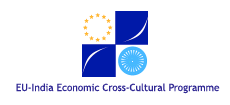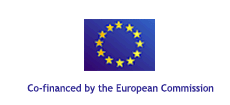Instituted by B.M. Birla Science Centre
Coordinated by B.G. Sidharth (B.M. Birla Science Centre, Hyderabad) and A.K. Ghosal (Indian Institute of Science, Bangalore)
The course covered concepts and techniques of modelling, optimization and simulation with particular reference to: modelling of rigid robots and mechanisms; modelling of flexible structures for flexible mechanisms and robots; modelling of feedback controlled mechanical systems; simulation of motion of robots, mechanisms and flexible structures such as deployment of solar panels or antennae; simulation of non linear dynamical systems.
The course focused on application oriented modelling and simulation techniques, in addition to optimization techniques both in the technical and cost analysis. The particular topics that were covered include:
1. Modelling of rigid robots and mechanisms (translation, orientation in terms of Euler angles etc.; linear and angular velocities, and accelerations of rigid bodies; representation of link and joints using Denavit-Hartenberg parameters; statics and dynamics of rigid robots and mechanisms using Newton-Euler and Lagrangian formulation; equations of motion of constrained systems using Lagrange multipliers).
2. Modelling of flexible structures for flexible mechanisms and robots (Euler Bernouli beam equation; discretization of Euler Bernoulli Beam equation and boundary conditions for actuated joints; comparison of assumed modes, finite element method and lumped parameter approaches; equations of motions using Lagrangian formulation).
3. Modelling of feedback controlled mechanical systems (Classical PID control and State Space Methods of control; model based non-linear control of robots and mechanical systems; force control for robots).
4. Simulation of motion of robots, mechanisms and flexible structures such as deployment of solar panels or antennae (solution of equations of motions using MATLAB; choice of integration methods, stiff system of equations etc.; case studies of flexible and rigid robots, solar panel deployment etc).
5. Simulation of nonlinear dynamical systems (non-linear systems and chaos - Lyapunov exponents, bifurcation diagram; case studies of possible chaotic motions in feedback controlled robots).
Within the context of the above topics, the course discussed the modelling techniques used for each of the above applications, how the differential equations of motions are derived, common integration techniques and packages used in simulation and display of the results, and general issues in modelling, optimization and simulation of mechanical systems. The course was intended for engineers and researchers in automobile industry, aerospace industry where multi-body systems and flexible systems are designed and used, any industry using robots and other forms of automation. An interaction between industry professionals and academics was aimed at.
Instituted by International Centre for Mechanical Sciences
Coordinated by Paolo Serafini (University of Udine) and Franca Rinaldi (University of Udine)
Integer Linear Programming has always been one of the major tools used to model the great variety of optimization problems that arise in applications such as production management, logistics, routing etc. Despite this, because of the intrinsic difficulty of these problems and the large dimensions of their real-life occurrences, the procedures used in practice to solve them are usually based on other approaches, such as greedy algorithms, local search methods, etc. These techniques do in fact lead to "good" feasible solutions in reasonable computing times and may be implemented with limited software resources. However, owing to the high-speed performance of the computers currently used, the development of very efficient LP-solvers and the availability of powerful optimization theoretical results, it is possible today to efficiently use LP-based techniques even in solving intractable problems. These methods are already included in many standard commercial packages and are likely to become more and more widespread in the future.
The aim of the course was to introduce the theoretical background of Integer Linear Programming with special attention to those techniques that can be useful to deal with large size instances and to show how these results may be applied to solve specific problems of production scheduling, crew scheduling and routing.
The topics covered included: linear programming: review of classical results, column generation; integer linear programming: branch and bound, lower bounding, cutting plane method, polyhedral combinatorics, branch and cut; sequential convexification; analysis of the methods in solving some scheduling and routing problems; LP environments; exact methods combined with heuristics; decomposition strategies.
Instituted by International Centre for Mechanical Sciences
Coordinated by Bernard Schrefler (University of Padua) and Luciano Simoni (University of Padua)
The course took a modern approach to understanding and solving a large variety of environmental problems in geomechanics, based on a thorough knowledge of heat and mass transfer mechanisms in deforming porous media. At the same time, it placed emphasis on appropriate constitutive behaviour of the solid phase and to numerical modelling.
Computational solutions are obligatory for the successful simulation of realistic problems. In particular, given that many problems are on a regional scale and that time horizons are often very distant, large scale computations are necessary. The issues listed above are a necessary background to the solution of a large variety of environmental problems in geomechanics, which are essentially multi-physics problems involving transport of some substance. Transport of contaminants and/or other substances may occur in underground fluids filling the pores of geomaterials. Mass transport also takes place in reservoir engineering problems, linked to the extraction of fluids such as water, oil, gas. The problems addressed therefore range from soil pollution due to chemical substances, heavy metals and non-aqueous phase liquids, to surface subsidence due to ground-water withdrawal or as experienced above exploited hydrocarbon reservoirs. Further, natural hazards such as seismic behaviour of slopes, dikes and dams will be dealt with.
The presentation of an educational software completed the content of the course. The course was intended for Ph.D. students, researchers and environmentally-oriented practising engineers.
Instituted by International Centre for Mechanical Sciences
Coordinated by Furio Honsell (University of Udine) and Simone Martini (University of Udine)
In recent years, software correctness and reliability, has become a crucial issue in safety critical computer applications or in mass production of embedded systems. Traditional testing techniques, however, cannot provide the required standards of certainty. Rigorous mathematical verification of software, based on Formal Methods, appears to be, therefore, the only validation technique available today and in the foreseeable future.
But to this end, both theoretical and practical tools are necessary. To devise adequate Formal Methods, we need a clear, logical and mathematical conceptual understanding and modelling of computational processes and the semantics of programming languages. And to apply such methods, we need computerised proof assistants for helping us in wading through the multitude of error-prone details involved in carrying out formal proofs.
Since the seventies, the world of Functional Programming has been the origin, and test-bed, of many of the most significant conceptual and practical tools, which have later been extended to full-fledged Formal Methods for Software verification: e.g. denotational semantics, Milner's LCF, Logical Frameworks, etc. The functional programming paradigm, lies at the very heart of Computation Theory, and it is also closely linked to various Logical and Mathematical disciplines such as, Proof Theory, Type Theory, and Category Theory. Functional programming languages appear as natural and executable specification languages as well as term languages for program logics. Furthermore, they allow to exploit the abstraction power of higher order techniques.
The aim of the course was twofold. First, we intended to expose the theoretical underpinnings of modern and future Functional Languages, ranging from features, to implementation techniques, and applications. Special attention will be devoted to the connections with Proof Theory and Type Theory. Lambda calculus and SML will be the running examples of this part. The second aim was to present some practical proof assistants based on Functional Languages. The system COQ was the running example here. At the end of the course the student had acquired familiarity with Lambda Calculus, SML, COQ.
The topics covered included: Typed Lambda Calculus (presentations a la Church and a la Curry, type inference); the Functional Language Standard ML; the Formula-as-types analogy; Proof theoretic and Categorical Foundations of Functional Languages (intuitionistic logic, linear logic, computation as normalisation of proofs); Type Theory; Logical Frameworks; The COQ proof assistant with examples.
This course was intended for young researchers in Theoretical Computer Science, as well as software engineers who want to familiarise with the basic mathematical, logical and categorical concepts, which lie at the heart of some modern and, probably many future, Formal Methods in Computer Science.
Instituted by B.M. Birla Science Centre
Coordinated by V. Sinha (Indian Institute of Technology, Kanpur) and S. L. Maskara (Indian Institute of Technology, Kharagpur)
Information transfer is a key issue for business, social interaction as well as for governance. The old communication paradigm for information connectivity through wireline technologies is rapidly being augmented by mobile communication technologies. Success of mobile telephony has paved the way for mobile data communication, mobile computing, mobile multimedia, and mobile video. In all these and more, the quality of service must be maintained. Many technological problems have been solved but many more challenges remain. The third generation mobile communication technologies, IMT 2000 and UMTS, leading to personal communication services and systems for information exchange are on the horizon.
Since mobile communication will be the principle vehicle for societal developments it is imperative for the concerned individuals and groups to be aware of the technologies, their principles and the promises. This course was planned to provide an insight, concept and understanding of the technology behind this new field of communication to the audience who can be academicians, practising engineers, service providers or any professional interested in this marvel of communication technology. The course also provided a platform for professional interaction between people working in this area in Europe and India.
The course was expository to cover the wide gamut of issues involved. Topics like basic mobile communication principles, cellular concepts, evolution of the 1st and 2nd generation systems, wireless access technologies, wireless local loops, digital modulation techniques, speech coding techniques, channel coding techniques, third generation mobile communication systems, packet radio systems, channel modelling and propagation issues, wireless ATM and wireless IP, software radio and smart antennas, mobile satellite communication systems were covered.

